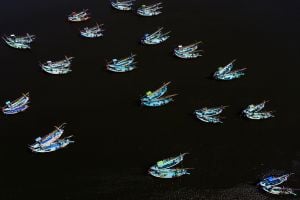Information about place
In English
In Balinese
Desa
In Indonesian
In English
Once upon a time, the Wau Rauh Pedanda named Danghyang Dwijendara, came to Bali from the Blambangan area. He arrived in western Bali, precisely in Jembrana, then met the village leader at that time, I Gusti Ngurah Rangsasa. But according to the story, I Gusti Ngurah Rangsasa is a proud and authoritarian leader. Because he felt himself more powerful, then I Gusti Ngurah Rangsasa challenged Danghyang Dwijendara. At that time, Danghyang Dwijendara prayed to the temple and cupped his hands. Because of his supernatural power, the stone inside the temple was split and the temple building fell apart. Seeing the incident, I Gusti Ngurah Rangsasa felt defeated and ran away from his village.
After the incident, the stakeholders visited Danghyang Dwijendara. He begged that the temple be restored. Well, the request was granted, so that the collapsed temple then stood up again as before. The incident was later enshrined in the name of the temple. In Balinese, encak means collapsing or breaking. Then the temple is named Pura Gede Perancak.
Well, behind this myth, this temple has become an alternative tourist spot for you to visit, because you can learn about Balinese traditions and culture here. Not only that, there is a large lake planted with mangrove trees behind the temple. There are several jukung (boat) that are ready to take you along the lake while enjoying the fresh air around.In Balinese
In Indonesian
Photo credit - Rio Helmi, https://riohelmi.com/
Text: https://visitbali.id/property/west-bali-temple-story-of-perancak-temple








Enable comment auto-refresher